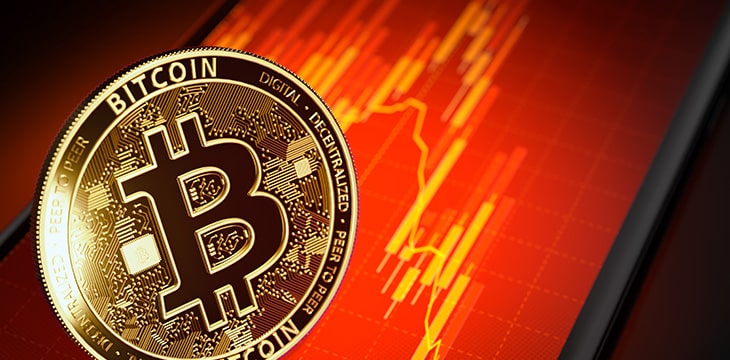|
Getting your Trinity Audio player ready...
|
Michael Lewis knows a thing or two about unsustainable financial bubbles. The veteran journalist and best-selling author wrote The Big Short detailing the housing bubble that culminated in the 2008 financial crisis. As a lifelong financial journalist, he’s no stranger to fads, manias, and the wipeouts that so often follow them.
In a recent podcast, Lewis warned digital currency speculators that “it may all come crashing down.” He said that the value of popular coins could dramatically plummet, and he stated that it could pose risks to the wider financial markets when this occurs.
Lewis is right about the innovation, but he’s understating the risks
It’s important to note that Lewis’ comments weren’t all doom and gloom. He praised innovators in the industry and saw opportunities for blockchain and digital currencies to make traditional markets fairer. He’s right about that, but he doesn’t go far enough to highlight the risks the current bubble poses to naive retail speculators.
What’s missing from Lewis’ risk analysis? Fraud. Like in the housing bubble that he famously wrote about, the digital currency industry is riddled with dishonesty, outright fraud, and other schemes and shenanigans. While bankers gave out mortgages like candy back then, these days, fraud is linked to a series of criminals who countertrade customers, print a counterfeit dollar substitute to prop prices up on centralized exchanges like Binance and FTX, and promote outright lies about what Bitcoin and other digital currencies are and what they can do.
BTC’s price is directly correlated to Tether printing
In order to accurately assess the risks the digital asset industry poses, one has to be aware of the scale of the fraud at play. Consider that in mid-2017, Tether had a market cap of just a few hundred million dollars, and the price of BTC was around $3,000 per coin. Since then, Tether has grown to have a market cap of over $80 billion, and BTC recently peaked at $60,000, or around 20x what it was trading at in the summer of 2017. Is this a mere coincidence? Draw your own conclusions, but it’s certainly a correlation worth noting.
Why is Tether’s massive printing spree a problem? To name but a few things, the firm was banned from New York State for lying, refuses to submit to a real audit, and that it has a long history of contradictions, false statements, and lies.
Aside from Tether, there are endless exchange hacks, many of which are inside jobs, bugs in code that cost speculators millions with no way to recover their funds, and some of the biggest exchanges counter-trading customers to liquidate them. There’s also lots of evidence of insider trading and token dumping on retail investors by employees of Coinbase and others.
Not understanding the extent of this is what causes non-specialists like Michael Lewis to understate the risks of the digital currency markets and perhaps overestimate the innovation occurring.
Don’t throw the baby out with the bathwater
Despite not realizing the extent of the rampant fraud in the industry and how it moves his “may come crashing down” to a more certain will come crashing down, Lewis is right that there’s a lot of innovation going on in the industry. Most of it is happening on Satoshi Nakamoto’s original Bitcoin protocol (BSV), and it’s happening at a pace that’s difficult to keep up with.
What innovations are these?
First, we have true peer-to-peer transactions, cutting out the middleman and making the original dream of the internet possible. Alice can send Bob some coins, pictures, messages, or NFTs without invasive companies like Meta and Google snooping. She can also opt to upload these to the BSV blockchain and receive micropayments for every interaction they receive on apps like Relica.
Then there are micropayments at scale. For the first time, it’s possible to send money anywhere for 1/1,000th of a cent. This opens up a whole new world of machine-to-machine payments and entirely new economic models such as play-to-earn blockchain games with Instant Leaderboard Payouts like offered by Haste Arcade and much more.
If that’s not impressive enough, Bitcoin gives us the world’s first transparent, immutable global ledger, making financial fraud more easily detectable. Contrary to popular myths, the Bitcoin ledger can scale to billions of on-chain transactions per second. In time, this ledger will leave a time-stamped entry of every financial transaction on earth, making events like the ‘08 housing crash detectable long before they occur. This element of Bitcoin makes much more sense when you realize its inventor was a career financial auditor.
What does all of this mean? It means that even financial market veterans who have seen it all before don’t fully grasp the scale of the crime and fraud occurring in the digital currency industry. It also means that the true golden era of Bitcoin has not yet begun. When the chickens come home to roost, and they will, Satoshi’s Bitcoin will shine.
Watch: CoinGeek New York presentation, BSV Blockchain: It’s About Time

 12-17-2025
12-17-2025 





